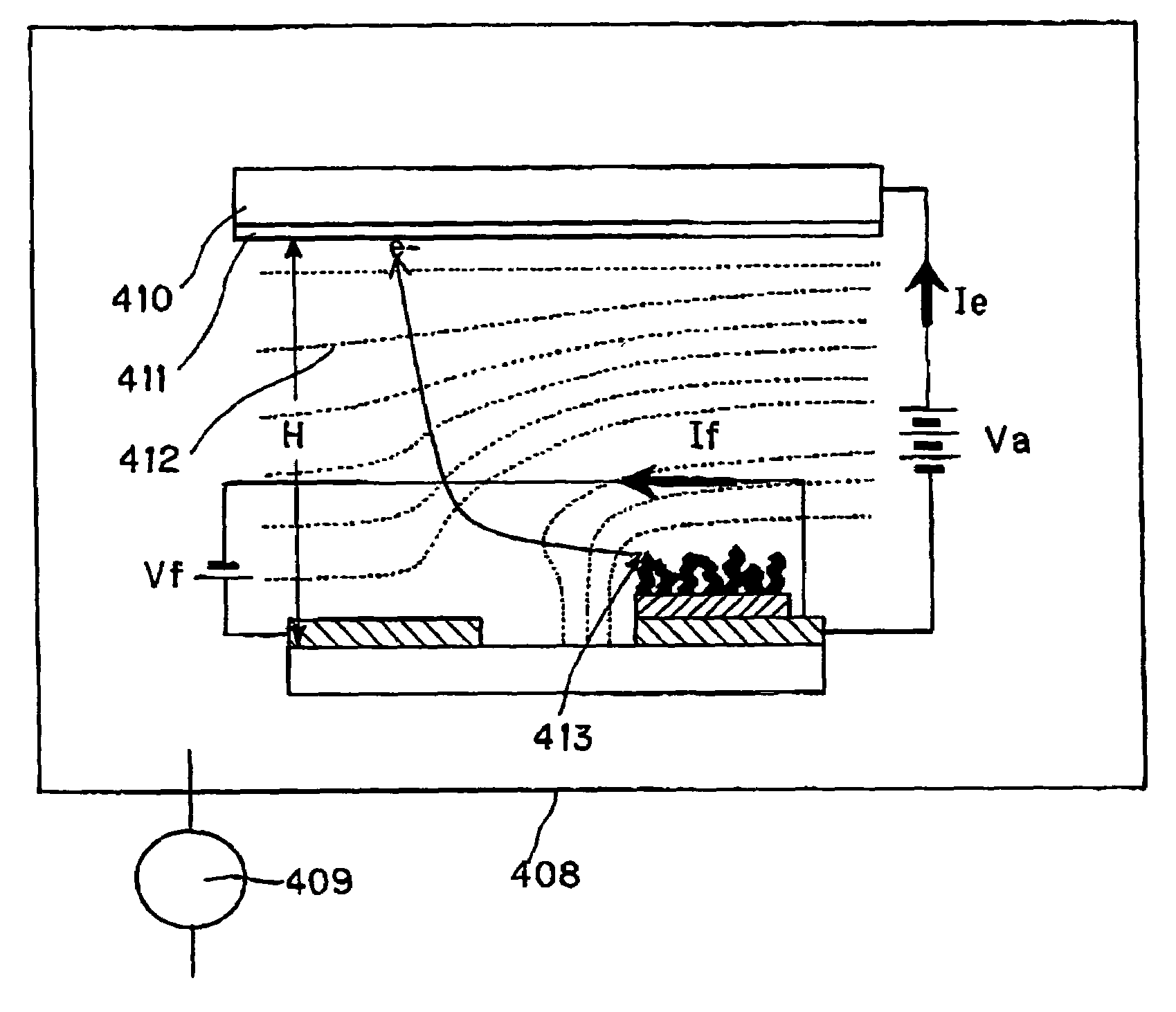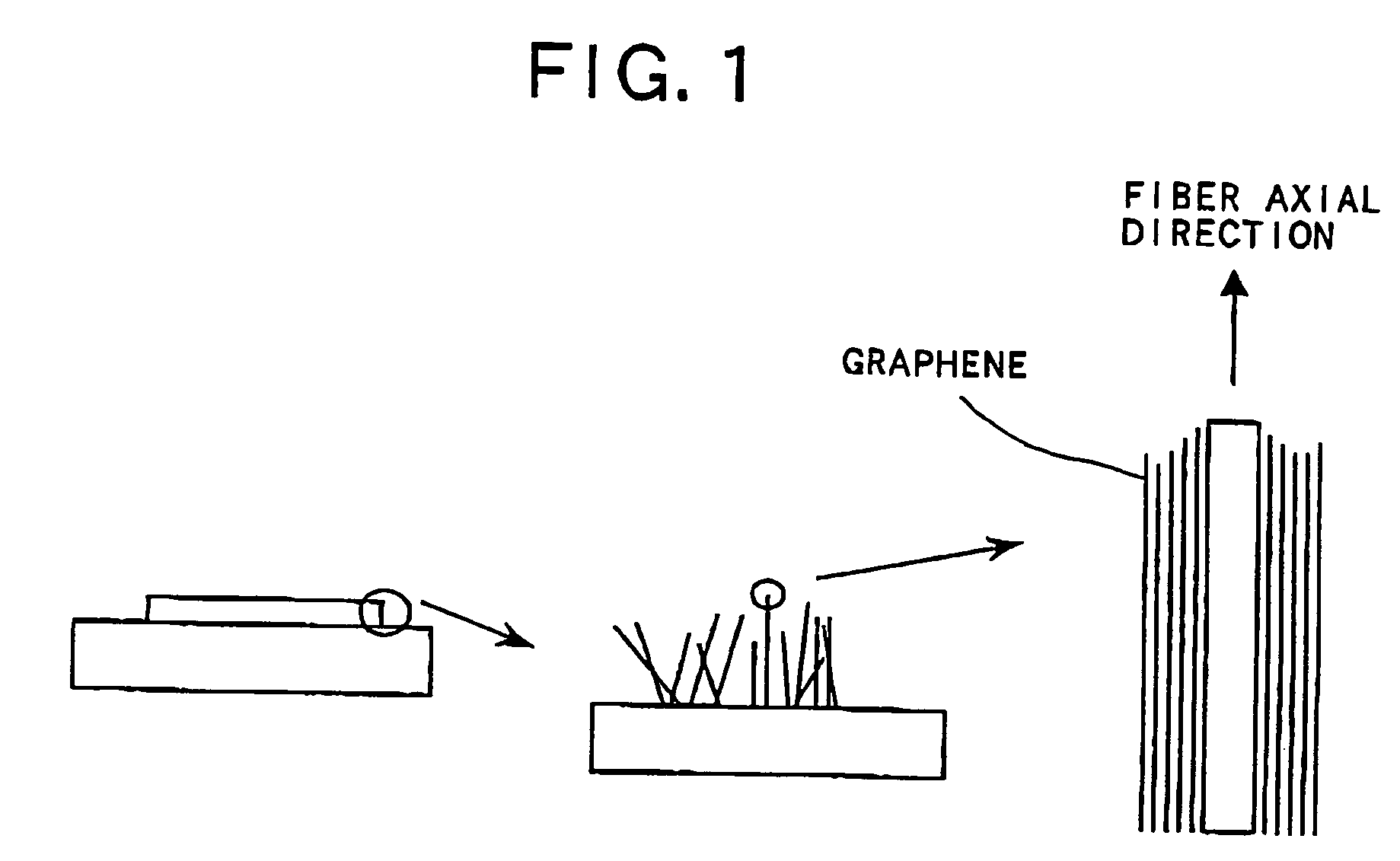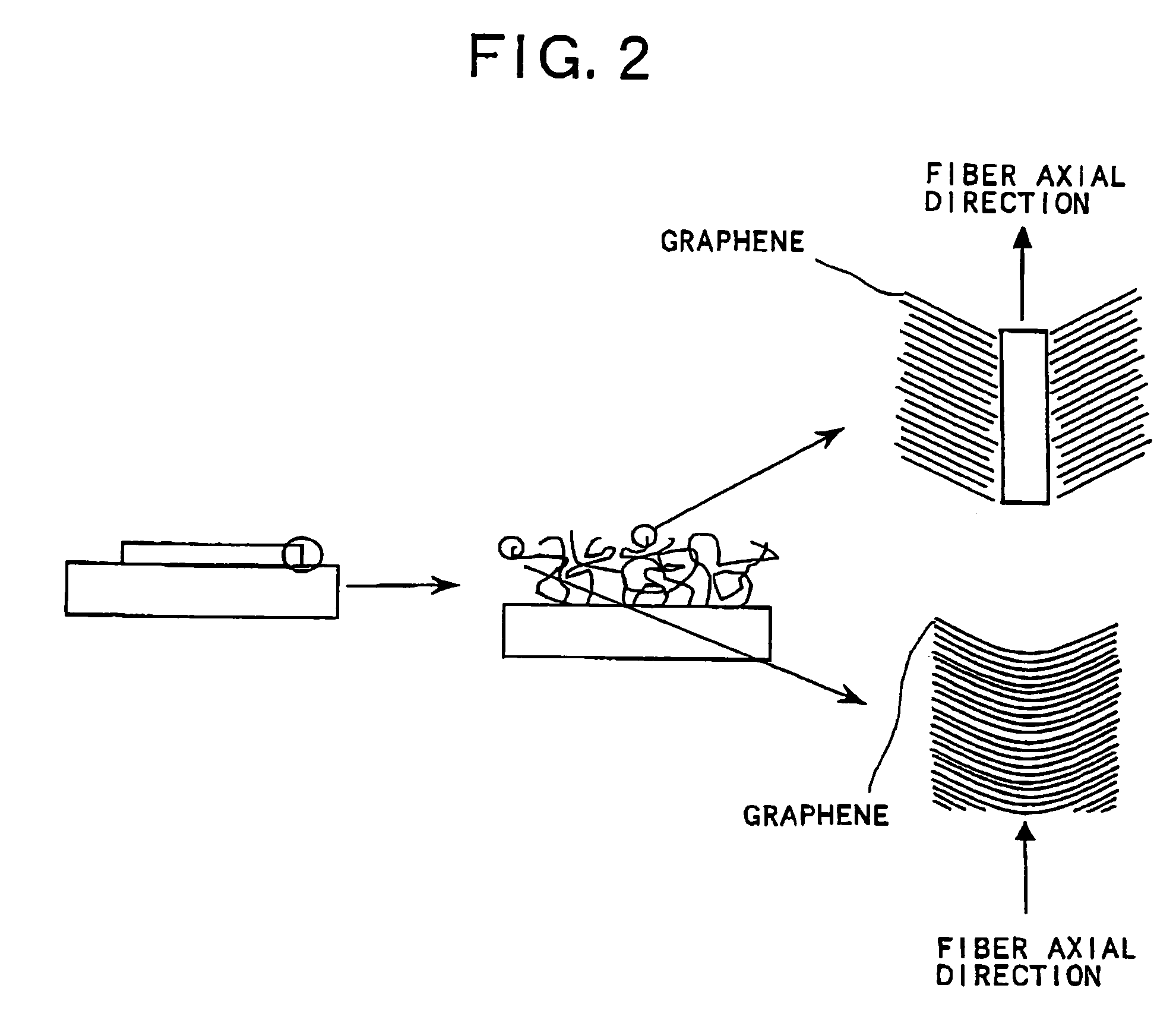Method of manufacturing an electron emitting device with carbon nanotubes
a carbon nanotube and electron emitting technology, which is applied in the manufacture of electrode systems, electric discharge tubes/lamps, tubes with screens, etc., can solve the problems of uneven luminance itself and inability to sustain satisfactory characteristics for a long service life, and achieve the effect of carbon fiber production and low cos
- Summary
- Abstract
- Description
- Claims
- Application Information
AI Technical Summary
Benefits of technology
Problems solved by technology
Method used
Image
Examples
example 1
[0127]First, a thin film of titanium nitride was formed on a substrate PD200 (a product of Asahi Glass Co., Ltd., Tokyo, Japan) by applying an ion-beam sputtering process.
[0128]In this case, an alloy material comprising 90% of cobalt and 10% of palladium was used as catalytic metallic components.
[0129]Next, the above-described substrate was disposed on a uniformly heated region inside a reaction vessel 505 is shown in FIG. 4. Next, the reaction vessel 505 is evacuated until a pressure of 10−6×1.333×102 Pa is reached, by applying a turbo-molecular pump 507 and a rotary pump 508.
[0130]As described earlier, a cylinder 502 stores compressed hydrogen gas diluted with nitrogen gas into 2 vol % of concentration. In the following step, the diluted hydrogen gas was fed from the cylinder 502 into the reaction vessel 505 via a gas flow meter 504 at room temperature and at a flow rate of 0.17 liter per minute. At the same time, ethylene gas diluted with nitrogen gas into 1 vol % of concentratio...
reference examples 1 – 3
Reference Examples 1–3
[0143]In the same way as in Example 1, a substrate was prepared for depositing a bundle of graphite nanofibers thereon. Next, the substrate was set inside a reaction vessel, and the interior space of the reaction vessel was evacuated.
[0144]As in Example 1, an alloy material comprising 90 parts of cobalt and 10 parts of palladium was used as catalytic metal.
[0145]Three ways were used for feeding gas into the reaction vessel.
example 2
[0154]In the same way as was done for Example 1, a substrate was prepared for growing a bundle of graphite nanofibers thereon.
[0155]As a catalytic metallic material, an alloy material comprising 50% of cobalt and 50% of palladium was prepared.
[0156]Then, the substrate was disposed inside a reaction vessel, and then the interior portion of the reaction vessel was evacuated.
[0157]Temperature for feeding hydrocarbon gas and hydrogen gas into the reaction vessel is the same as in Example 1.
[0158]By applying the above-described method, a bundle of graphite nanofibers was formed on the substrate. Diameter distribution of the thus formed graphite nanofibers is shown in FIG. 12. FIG. 12 presents an analytical chart indicating diameter distribution of an bundle of graphite nanofibers produced by applying the method of manufacturing the inventive electron emitting device.
[0159]In the case of the diameter distribution shown in FIG. 12, the mean diameter value of the bundle of the graphite nano...
PUM
| Property | Measurement | Unit |
|---|---|---|
| diameter distribution | aaaaa | aaaaa |
| diameter distribution | aaaaa | aaaaa |
| diameter | aaaaa | aaaaa |
Abstract
Description
Claims
Application Information
 Login to View More
Login to View More - R&D
- Intellectual Property
- Life Sciences
- Materials
- Tech Scout
- Unparalleled Data Quality
- Higher Quality Content
- 60% Fewer Hallucinations
Browse by: Latest US Patents, China's latest patents, Technical Efficacy Thesaurus, Application Domain, Technology Topic, Popular Technical Reports.
© 2025 PatSnap. All rights reserved.Legal|Privacy policy|Modern Slavery Act Transparency Statement|Sitemap|About US| Contact US: help@patsnap.com



